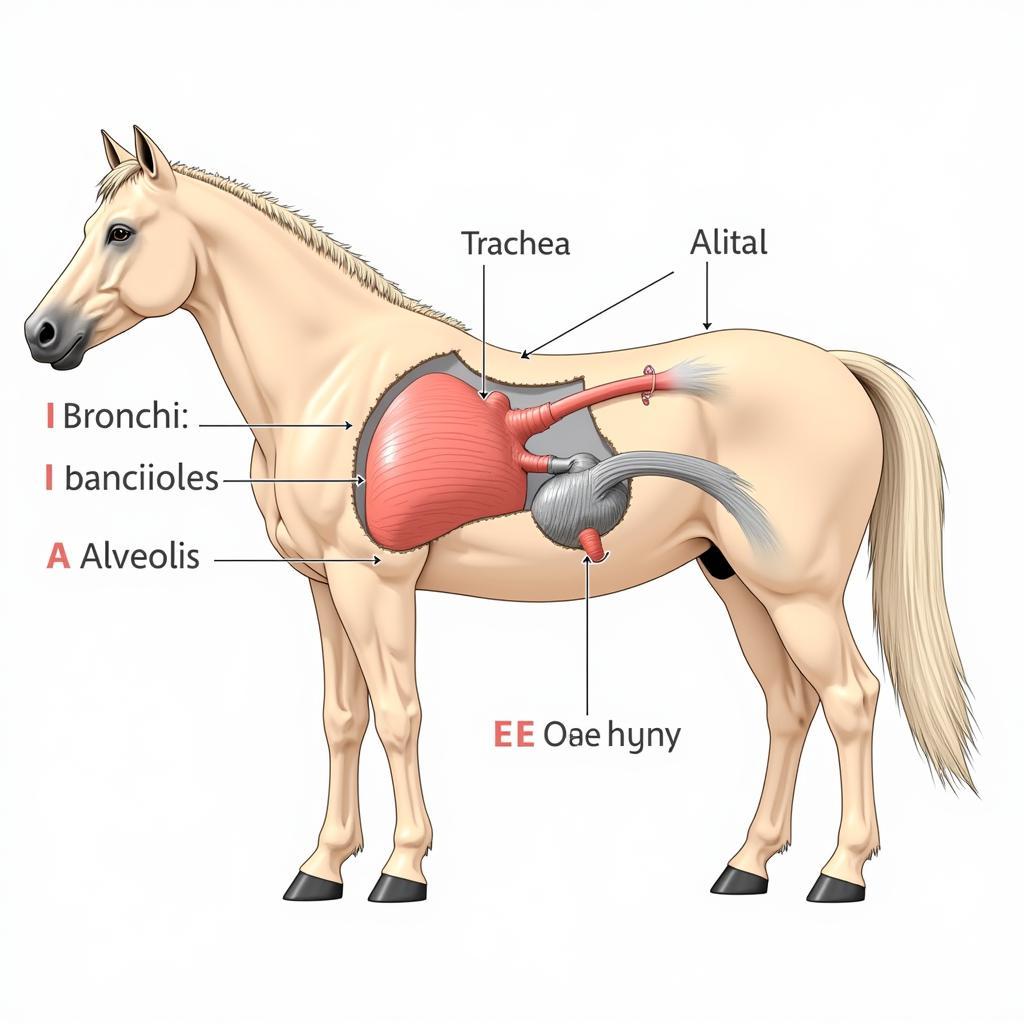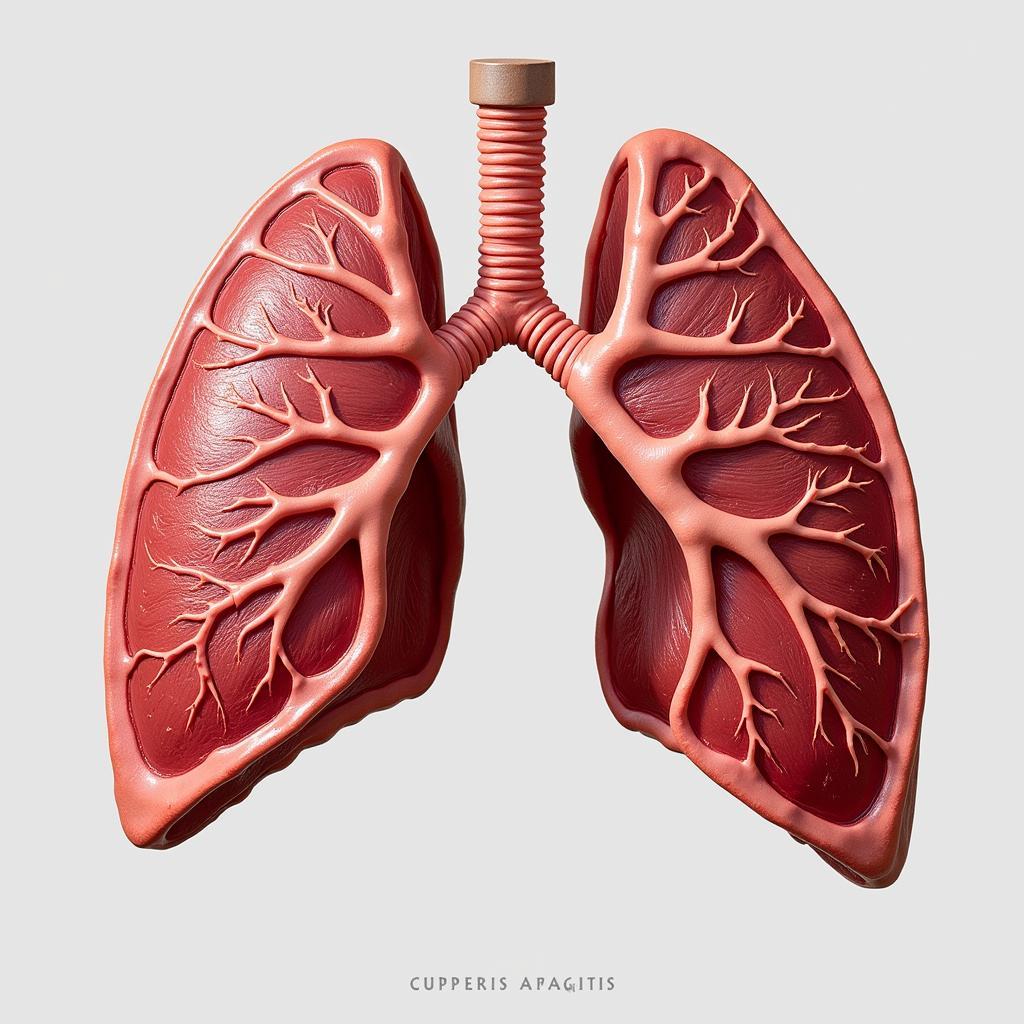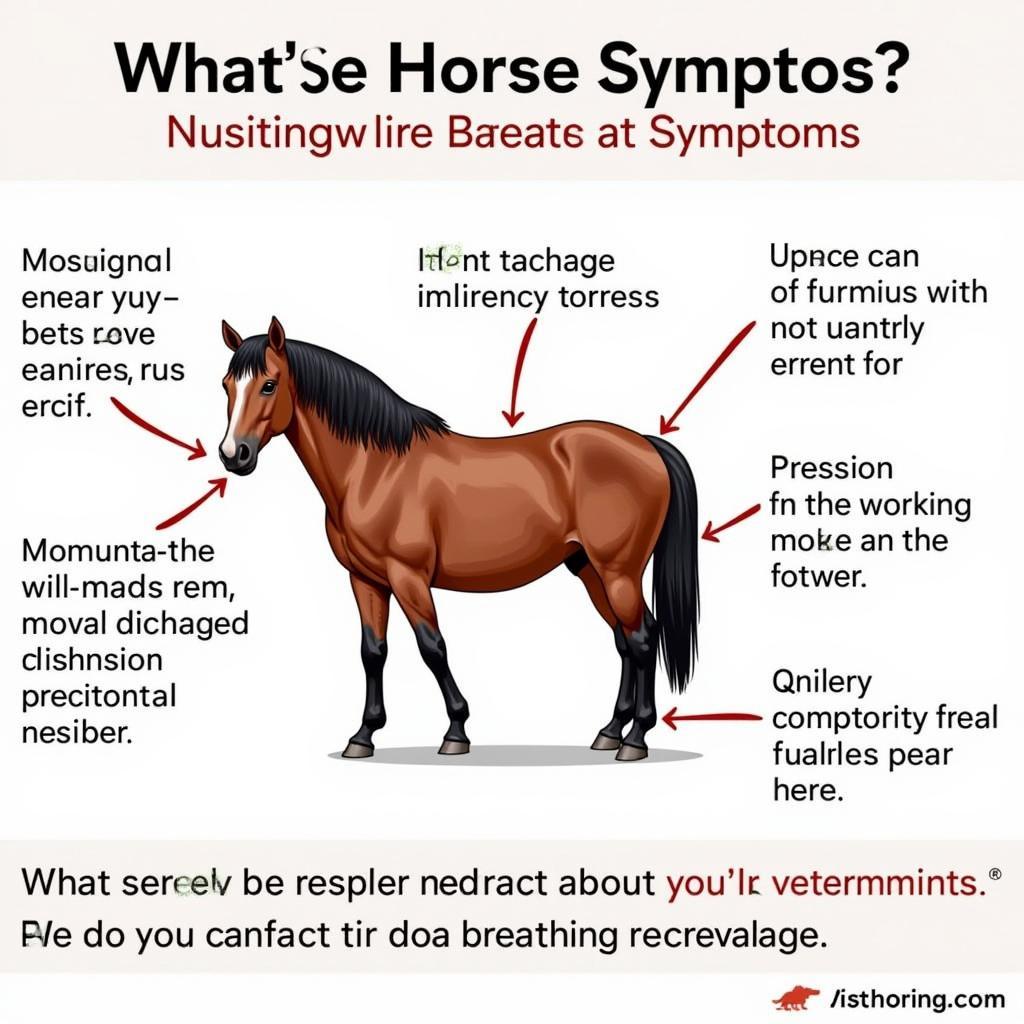Horse lungs, compared to human lungs, possess some remarkable differences that contribute to their athletic prowess. Understanding these differences is crucial for every horse owner and enthusiast. In this article, we’ll explore the fascinating world of equine respiration, comparing and contrasting it with the human respiratory system.
Understanding the Basics: How Horse Lungs Function
Horses, being powerful and athletic animals, require a highly efficient respiratory system. Their lungs are significantly larger than human lungs, allowing them to take in vast amounts of oxygen. The process begins with inhalation, where air enters through the nostrils and travels down the trachea, eventually reaching the lungs. Within the lungs, the air is distributed into smaller and smaller airways called bronchi and bronchioles, finally reaching the alveoli, tiny air sacs where gas exchange occurs. Oxygen is absorbed into the bloodstream, while carbon dioxide, a waste product, is expelled during exhalation.
 Horse Lung Anatomy Diagram
Horse Lung Anatomy Diagram
Key Differences: Horse Lungs vs. Human Lungs
One of the most significant differences between horse and human lungs lies in their size and capacity. A horse’s lungs can hold up to 55 liters of air, while human lungs typically hold only around 6 liters. This increased lung capacity allows horses to take in more oxygen with each breath, fueling their muscles during intense physical activity. Another key difference lies in the diaphragm. In humans, the diaphragm is dome-shaped, whereas in horses, it’s more flattened. This difference contributes to the unique way horses breathe, particularly at higher speeds.
 Comparing Horse and Human Lungs
Comparing Horse and Human Lungs
The Role of the Diaphragm in Equine Respiration
The diaphragm plays a crucial role in equine respiration, particularly during locomotion. At a gallop, the movement of the horse’s gut actually assists the diaphragm in pushing air out of the lungs. This is known as locomotor-respiratory coupling, a phenomenon where the stride frequency and respiratory rate become synchronized. This synchronization maximizes oxygen intake and allows the horse to maintain high speeds for extended periods.
Common Respiratory Issues in Horses
Like humans, horses are susceptible to various respiratory ailments. Some common issues include equine asthma, also known as recurrent airway obstruction (RAO), and influenza. Understanding these conditions and their symptoms is essential for early diagnosis and treatment.
Recognizing the Signs of Respiratory Problems
Recognizing the signs of respiratory distress in horses is vital for ensuring their well-being. Common symptoms include coughing, nasal discharge, labored breathing, and reduced performance. If you notice any of these signs, it’s crucial to consult a veterinarian immediately.
 Signs of Respiratory Problems in Horses
Signs of Respiratory Problems in Horses
Conclusion: Prioritizing Equine Respiratory Health
Understanding the intricacies of Horse Lungs Compared To Human lungs is essential for every horse owner. By recognizing the unique characteristics of the equine respiratory system and being aware of potential health issues, you can take proactive steps to ensure the well-being of your equine companion. Proper management, including good stable ventilation, regular exercise, and prompt veterinary care, are crucial for maintaining optimal respiratory health in horses.
FAQ
- What is the capacity of a horse’s lungs? (Around 55 liters)
- How does the horse’s diaphragm differ from a human’s? (It’s flatter)
- What is locomotor-respiratory coupling? (Synchronization of stride and breathing)
- What are some common respiratory problems in horses? (Equine asthma, influenza)
- When should I contact a vet about my horse’s breathing? (If you notice coughing, nasal discharge, or labored breathing)
- What are the main differences between horse lungs compared to human? (Size, diaphragm shape, locomotor-respiratory coupling)
- How can I contribute to my horse’s respiratory health? (Good stable ventilation, regular exercise, prompt veterinary care)
For any further assistance with your equine companion’s health or any questions relating to horse lungs compared to human, please contact us at Phone Number: 0772127271, Email: [email protected] Or visit us at QGM2+WX2, Vị Trung, Vị Thuỷ, Hậu Giang, Việt Nam. We have a 24/7 customer support team.